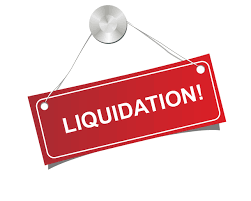The average person doesn’t realize that selling a company is often the most gut-wrenching transaction of a business owner’s life. They’ve just spent their life building the business, it’s their largest asset, and they have no training or experience in selling a business. With that as a backdrop, here are ten practical directives that will help you make better exit strategy decisions and achieve a more successful sale.
1. I shall plan ahead
Why sell? This business may be your life’s work. If you sell, what will you do next? Is your family on board? What type of lifestyle do you want and what will your expenses be? What is the most probable selling price of your business and what are your likely sale proceeds after taxes? Is that enough to fund the next chapter of your life? How will you reinvest the proceeds? The point here is to have your personal needs, goals and plans in focus before you make the final decision to go to market.
2. I shall not depend on miracles
In the privately-held business marketplace, sellers expect full value and buyers require a reasonable return on investment. It’s win-win or no deal. According to the
2014 Pepperdine Private Capital Markets Survey, the number one reason business sale transactions don’t happen is a gap in value expectations. Over-valuing your business leads to mistakes in judgment and poor decisions. So does undervaluing it. Usually there is a market-based price range for similar businesses with comparable financial performance and risk characteristics. A skilled M&A broker can often move price up in the range, but expecting a lot more usually leads to no deal. Before you go to market, spend some time and money with a qualified and objective M&A brokerage professional to assess the market value of your business.
3. I shall prepare my business
A seasoned M&A broker can also objectively evaluate your business from marketability, transferability, finance-ability and deal survivability perspectives. Then take that professional feedback to heart and address the weaknesses. Every business is unique, but here are a few common preparation initiatives: Have financials reviewed to reduce a buyer’s perception of risk. Embark on a program to diversify the customer base (if concentrated). Delegate more to make yourself less critical to the operation. Put incentives in place to retain key employees who can facilitate a smooth transition. Legally protect intellectual property. Capture growth opportunities in a written business plan with realistic financial projections. Buyers will have their own plans, but this helps them perceive greater value. Think of exit strategy as business strategy with a specific purpose.
4. I shall not wait for perfect timing
It makes sense that the best time to maximize selling price is when business, industry, economic and capital market conditions are strong. Yet, letting go is hard to do when things are good. Don’t make the mistake of waiting too long to make your move. In my experience, owners have a tendency to hold on longer than they should. I could easily cite dozens of examples where an owner held on too long, the business lost its competitive edge, sales and earnings slid, and enterprise value declined severely. Deciding when to go to market requires uncommon objectivity, faith, and courage.
Also keep in mind that the selling process takes 9 months on average. Add time on the front end for go-to-market preparation, and add time on the back end for management transition. Call us if you’re interested in understanding likely time-frames for preparation and transition for your particular circumstances.
5. I shall help buyers buy
I know it sounds simple, yet many owners think playing hard to get and withholding information is the answer. To maximize value, businesses need to be presented with clear, supportable facts. In successful deals, a professional Confidential Information Memorandum (aka “deal book”) is presented to prospective buyers who have signed a confidentiality agreement. A fact-based CIM communicates the essential information that serious buyers need to get a firm grasp on your business, be confident in its prospects, and make solid purchase offers. A CIM presents information in the language of experienced buyers and professional buy-side advisers.
In many years of looking, I have yet to see the perfect business. A significant weakness or risk revealed early in the discovery phase is usually a manageable hurdle or a point to negotiate around, and always a big time saver. That same information revealed during negotiations or later on in due diligence becomes a catalyst for buyers to reexamine every piece of data, lower projections or increase their required rate of return (lower their price), or walk away. Also, appropriately exposing your company’s warts early in the process builds trust and credibility with buyers, which becomes an advantage in negotiations, and helps ensure that you keep your proceeds after the sale.
6. I shall have buyers competing to buy
It can be difficult to achieve full value with just one buyer at the negotiating table. When someone inquires about acquiring a business that is not for sale, that limits the negotiation to one party. Most of these inquirers don’t buy; and when one does, their purchase price is usually lower than what can be achieved in a structured M&A sale process. When an owner decides to exit, it is not uncommon for them to confide in their CPA, attorney or financial advisor. That advisor may mention, “I know a potential buyer, why don’t I introduce you?” This also leads to a negotiation of one. Buyers love exclusivity. This may not be in your best interest if your objective is to maximize selling price. Price is generally maximized in a limited auction process.
7. I shall keep my eye on the ball and my lips sealed
Some owners make the mistake of becoming distracted with selling instead of running their business, resulting in significant value erosion. When sales or earnings slide – so does selling price. There simply isn’t enough time in the day to run a business at peak performance and perform the job of selling it. Do what you do best and hire an M&A professional to run a confidential structured sale process.
Also, it is nearly impossible to maintain confidentiality when an owner attempts to sell on his own. Colleagues gossip. Word spreads fast. Employees may leave and customers may go elsewhere. Bankers and suppliers get nervous. Competitors take advantage. Then the business suffers and goodwill value declines. A competent M&A broker uses systems and procedures to maintain confidentiality and release sensitive information at appropriate times.
8. I shall not do surgery on myself
Selling a business is something you need to do right the first time. For many reasons, you improve your odds of maximizing and holding on to your sale proceeds when you engage an M&A brokerage professional that specializes in selling businesses. Here we can take a lesson from public companies and private equity groups, who wouldn’t consider a sale or divestiture without engaging an investment bank. Why? Better results, and less risk of failure. Engage a professional M&A broker to tip the experience scale in your favor, and manage the entire process for you.
9. I shall use experienced professionals
Your transition team must know the specialized business, legal and tax issues of business transactions, and they must match up against the experience level of a buyer’s advisers. Price is important, but your real goal is to maximize after-tax proceeds. Deal structures that favor you for taxes are often unfavorable to the buyer and vice versa. Are you confident in your tax adviser to help you plan for Uncle Sam, the unwanted stakeholder in any deal? Do you have an experienced transaction attorney who you can trust to negotiate post transaction risks in a commercially reasonable manner? Your end results will be better when you use qualified and seasoned professionals from the very beginning.
10. I shall not let time kill my deal
Time is one of the biggest deal killers, often when due diligence bogs down. Buyer and seller principals are busy running their businesses; attorneys, CPAs and other deal participants can also get distracted. One of the roles of an M&A broker is to establish timelines, keep the deal teams on track, and maintain deal momentum; and not let deal fatigue set in.
During the selling process, never lose sight of why you are selling, whether it is to go fly fishing, travel the world, provide financial security for family members, make charitable contributions, or some other larger purpose. It’s important to keep your big picture future in focus as you encounter the challenges and ride the emotional roller coaster of selling a business. We get it, and we’ll be with you all the way.
If you have questions or want a more complete understanding of any of the above directives, or to schedule a confidential consultation about selling, merging or acquiring a California business, Email Al Statz or call him at (707)778-2040.
 Going to market when you and your business are ready to sell and market conditions are right provides the best opportunity to maximize results. Let’s look at how these three ingredients combine:
Going to market when you and your business are ready to sell and market conditions are right provides the best opportunity to maximize results. Let’s look at how these three ingredients combine:
 Most business acquisitions by private equity firms have been “add-on” deals lately.
Most business acquisitions by private equity firms have been “add-on” deals lately. While the typical premise of value in valuing an operating business for a sale/acquisition or exit planning is as a going concern, occasionally, facts and circumstances indicate that an owner would be better off liquidating his or her business. Unfortunately, this often comes as a shock to an owner who has spent years working in and building a business with the expectation that it can be sold for enough to provide a significant nest egg for retirement.
While the typical premise of value in valuing an operating business for a sale/acquisition or exit planning is as a going concern, occasionally, facts and circumstances indicate that an owner would be better off liquidating his or her business. Unfortunately, this often comes as a shock to an owner who has spent years working in and building a business with the expectation that it can be sold for enough to provide a significant nest egg for retirement. “Be Prepared” is the Boy Scout Motto that has served young individuals and their character development in over two hundred countries since 1907. It can also be an effective mantra for a business owner who will engage in marketing and selling a business. A well prepared business owner plays a vital role on the transaction team and helps ensure maximum value to the shareholders and a smooth transition of ownership.
“Be Prepared” is the Boy Scout Motto that has served young individuals and their character development in over two hundred countries since 1907. It can also be an effective mantra for a business owner who will engage in marketing and selling a business. A well prepared business owner plays a vital role on the transaction team and helps ensure maximum value to the shareholders and a smooth transition of ownership. Private equity groups are active acquirers of closely-held lower middle market companies here in California. Private equity consists of individuals, families and institutional investors that make passive minority investments in partnerships that invest in, provide debt financing for, and operate private companies.
Private equity groups are active acquirers of closely-held lower middle market companies here in California. Private equity consists of individuals, families and institutional investors that make passive minority investments in partnerships that invest in, provide debt financing for, and operate private companies. I recently completed an exit planning valuation of a business that enjoyed a very favorable discount on purchases of a key component used in the assembly of its products. The discount, negotiated many years ago, was a handshake deal between the founder of the company and his former employer who manufactured the component. This large discount enables the business to be significantly more profitable that it would be otherwise. Any investor or buyer for this business will naturally be concerned about whether the company can continue buying this component at the same below-market price.
I recently completed an exit planning valuation of a business that enjoyed a very favorable discount on purchases of a key component used in the assembly of its products. The discount, negotiated many years ago, was a handshake deal between the founder of the company and his former employer who manufactured the component. This large discount enables the business to be significantly more profitable that it would be otherwise. Any investor or buyer for this business will naturally be concerned about whether the company can continue buying this component at the same below-market price.

